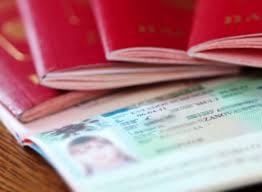If you’ve recently renewed your passport but still have a valid visa in your old one, you might wonder how to transfer that visa to your new passport. This process can vary depending on the country that issued the visa and the country that granted it. Here’s a comprehensive guide to help you through the process.
How to Transfer a Visa to a New Passport: A Step-by-Step Guide
1. Understand the Requirements
First, it’s important to understand the specific requirements of the country that issued your visa. Some countries allow you to travel with both the old and new passports, while others may require you to transfer the visa.
- Check Official Guidelines: Visit the official website of the embassy or consulate of the country that issued the visa. Look for information related to visa transfers or replacement visas.
- Contact the Embassy: If the information is not clear, contact the embassy or consulate directly. They can provide detailed instructions on the process.
2. Gather Necessary Documents
Before you begin the process, make sure you have all the necessary documents ready. Generally, you will need:
- Your old passport with the valid visa.
- Your new passport.
- A completed visa transfer application form (if required).
- Passport-sized photos (as per specifications of the embassy).
- Proof of your identity (such as a national ID card).
- Any other documents specified by the embassy or consulate.
3. Fill Out the Application Form
If an application form is required, ensure it is filled out completely and accurately. Mistakes or incomplete forms can cause delays in the process.
- Download the Form: You can usually download the application form from the embassy or consulate’s website.
- Fill in Details: Provide all necessary details, including personal information, passport details, and information about the visa you are transferring.
4. Submit Your Application
Depending on the embassy or consulate, you may need to submit your application in person, by mail, or online.
- In-Person Submission: If you need to visit the embassy or consulate, make an appointment if required. Bring all your documents and be prepared for a possible interview.
- Mail Submission: If mailing your documents, use a secure and trackable method. Include a prepaid return envelope if required.
- Online Submission: Some countries offer an online submission process. Follow the instructions on the official website carefully.
5. Pay the Fee
There is usually a fee associated with transferring a visa. The amount varies by country and type of visa. Check the embassy or consulate’s website for the exact fee and acceptable payment methods.
- Payment Methods: Common methods include bank drafts, money orders, or online payments. Ensure you pay the correct amount to avoid delays.
6. Wait for Processing
Processing times can vary. It may take a few days to several weeks, depending on the country and the complexity of your application.
- Tracking: If available, use any tracking services provided by the embassy or consulate to monitor the status of your application.
7. Receive Your New Visa
Once your application is processed, you will receive your new visa. This may be affixed to your new passport or issued as a separate document that you must carry with your new passport.
- Verify Details: Check the new visa for any errors. If there are mistakes, contact the embassy or consulate immediately for corrections.
8. Keep Both Passports
Even if your visa is transferred to your new passport, it’s often a good idea to keep your old passport with you, especially if it contains other valid visas or important travel history.
Can I transfer my Canada visa to a new passport?
No, you cannot physically transfer your Canadian visa to a new passport. Canadian visas typically remain valid even after you get a new passport.
There are two options for you:
- Travel with both passports: When travelling to Canada, you can bring both your old passport (with the visa) and your new passport. You should inform the border officer that your visa is in your old passport.
- Apply for a new visa: While it’s not mandatory, applying for a new visa in your new passport is recommended. This can avoid any delays or confusion at the border.
Conclusion
Transferring a visa to a new passport might seem daunting, but by following these steps and carefully adhering to the guidelines provided by the issuing country, you can ensure a smooth process. Always double-check the specific requirements of the country in question and prepare your documents meticulously to avoid any issues.
